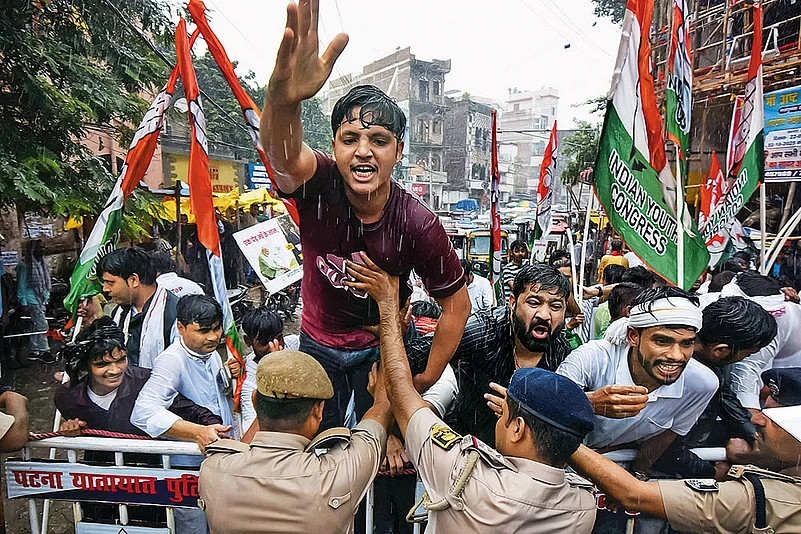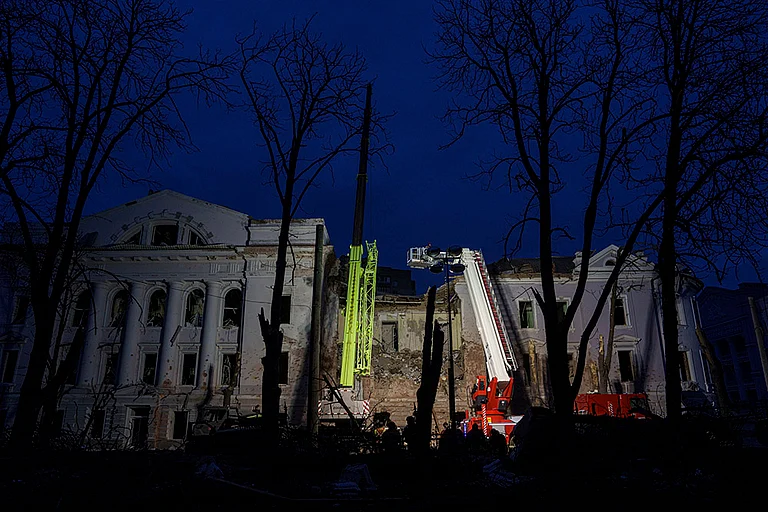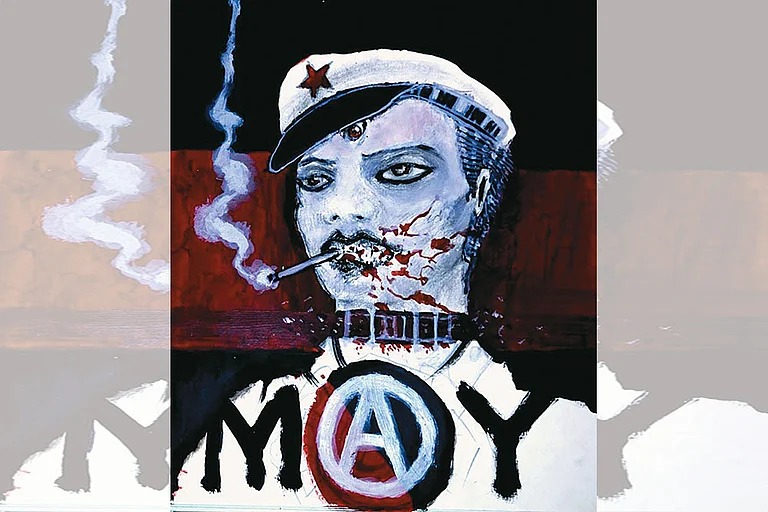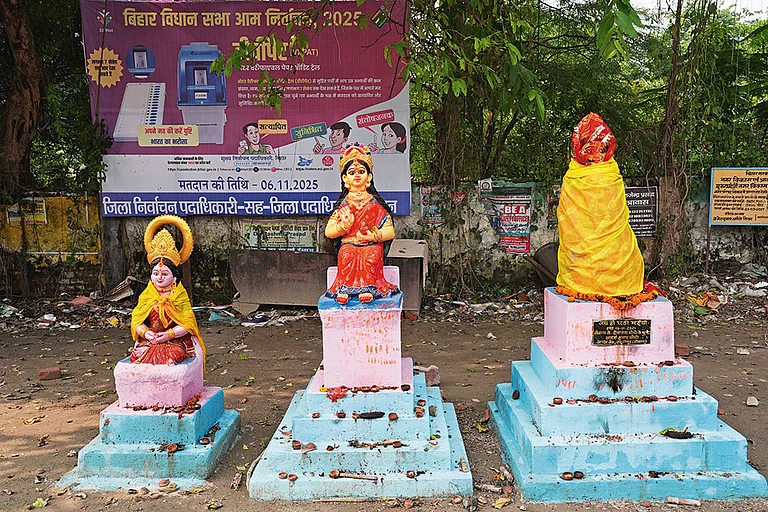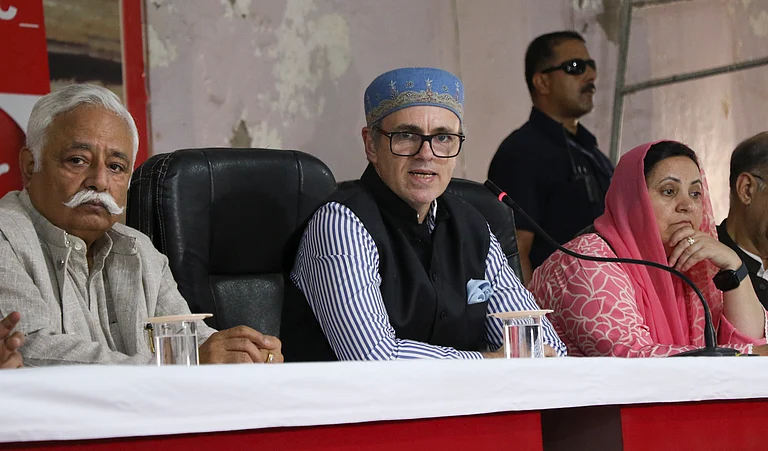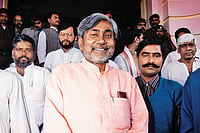
Unlike previous elections, the 2025 contest is witnessing a pronounced emphasis on the Gen Z cohort (born roughly between 1997 and 2012).
While the absolute number of new voters has increased since 2020 (11.17 lakh), it remains significantly below the 24.13 lakh registered in 2015.
Bihar has the country’s highest proportion of young people.
The Election Commission of India has announced a two-phased Bihar assembly election, to be held on November 6 and 11, 2025. The announcement follows weeks of political wrangling and legal disputes among major political parties, a prelude to what promises to be one of Bihar’s most fiercely contested polls in recent years. What’s new this time is the heightened focus on the youth vote, particularly the Gen Z—a demographic that is increasingly shaping the political narratives not only through ballots, but through social media, protests, and public discourse. Unlike previous elections, the 2025 contest is witnessing a pronounced emphasis on the Gen Z cohort (born roughly between 1997 and 2012). The post-pandemic political context, rising digital engagement, and visible disenchantment, which the conventional political leadership has together positioned Bihar’s young electorate as a critical constituency capable of influencing electoral outcomes.
The upcoming Bihar assembly election of 2025 marks a crucial juncture in the state’s political trajectory—with nearly 58 per cent of Bihar’s population under the age of 25—this demographic cohort possesses both numerical and ideological potential to reshape political narratives traditionally dominated by caste and patronage-based politics. The Gen Z voters are characterised by their aspirational outlook, technological engagement, and growing political consciousness. They are influencing party strategies, campaign rhetoric, and the grammar of governance. Recent democratic crises across South Asia, such as the political turmoil in Nepal, have underscored the transformative potential of youth-driven mobilisations. The message resonating across borders is that democratic legitimacy increasingly depends on the inclusion, participation, and trust of younger citizens.
The Demographic Dividend and the Electoral Worth of Gen Z
Bihar has the country’s highest proportion of young people. Of Bihar’s 7.44 crore registered voters, approximately 25 per cent belong to Gen Z, and around 14.7 lakh are first-time voters. This translates to roughly 5,700 new voters per assembly seat, as reported by The Indian Express.
While the absolute number of new voters has increased since 2020 (11.17 lakh), it remains significantly below the 24.13 lakh registered in 2015. The average number of first-time voters per constituency dropped from 9,930 in 2015 to 4,597 in 2020. The 2015 election data showed 73 seats where the number of first-time voters surpassed the victory margin, including in Tarari, where the Communist Party of India (Marxist-Leninist) Liberation (CPI-ML (L)) candidate beat his rival from the Lok Janshakti Party-Ram Vilas (LJP-Ram Vilas) by just 272 votes. Importantly, 56 constituencies (23 per cent of all seats) in the 2020 election had margins of victory smaller than the number of first-time voters, demonstrating the potential electoral influence of this segment in many assembly constituencies in 2025. This pattern underscores the political weight of Bihar’s young electorate—one that every major party is now keenly courting.
Aspirational Voters in a Caste-Weary State
For decades, Bihar’s politics has revolved around caste identities, where, as many quip, “caste casts the vote”. Bihar’s political culture has historically been anchored in caste identities, where political mobilisation often mirrored social hierarchies. The enduring dominance of the Other Backward Classes (OBC)-led parties such as the Rashtriya Janata Dal (RJD) and the Janata Dal (United) (JD-U) exemplified the “politics of representation” rather than the “politics of aspiration”. However, the rise of Gen Z is gradually transforming this paradigm. The emergence of Gen Z, the tech-savvy, mobile, and aspirational is gradually altering this equation due to their exposure to digital media, education, and the labour market. Their political preferences are influenced by issues such as employment, skill development, corruption, and gender equality. This demographic shift is forcing parties to move beyond traditional identity politics toward agenda-based mobilisation.
JD-U’s Nitish Kumar’s developmental politics in the 2000s—centered on infrastructure, law and order, and governance—introduced a partial break from caste polarisation. Nitish Kumar’s leadership since 2005, under the National Democratic Alliance (NDA) banner, shifted Bihar’s political discourse from purely caste arithmetic to development narratives promising roads, schools, and electricity. His alliance initially consolidated the upper castes and the non-Yadav OBCs who had drifted from the RJD-Congress bloc. But after two decades, fatigue is visible. The younger generation now demands not just infrastructure, but opportunities, education, jobs, and dignity. With a state urbanisation rate of just 13.3 per cent, among the lowest in India, and limited industrial growth, Bihar’s youth are demanding a more vibrant and inclusive model of development.
The Rise of Jan Suraj and the Politics of Discontent
The political landscape of 2025 features a new challenger: Prashant Kishor’s Jan Suraj. Positioned as a reformist movement, Jan Suraj has sought to distance itself from caste politics and appeal directly to Gen Z’s frustration with unemployment and corruption. Kishor’s active participation in student protests, such as those against the Bihar Public Service Commission (BPSC) paper leak, has earned his party credibility among the youth, and he has been able to consolidate his image as an advocate for accountability and transparency in governance.
This growing appeal stems from a broader disenchantment among Bihar’s youth caused by persistent unemployment, poor educational infrastructure, and governance inefficiencies, which have eroded trust in traditional institutions. A 2017-2022 report by the Comptroller and Auditor General of India (CAG) revealed that 18 per cent of education funds remained unutilised, and 57 per cent of teaching positions were vacant. These figures reveal the depth of systemic neglect forcing thousands of students to migrate for better education and jobs. Youth out-migration rose from 5.5 million in 2001 to 7.9 million in 2011, and is estimated to be significantly higher today.
The state government’s 2023 caste-based survey report estimates that around 10 per cent of upper-caste Hindu households have at least one migrant member, while those from marginalised communities face economic barriers and migration. The exodus of youth, both skilled and unskilled, not only drains the state’s human capital, but also symbolises their loss of faith in the local economy. For those who remain, private coaching centres have become substitutes for failing public institutions, further commercialising the dream of upward mobility.
Political Parties and the Reinvention of Youth Outreach
Recognising this disillusionment, traditional political parties are reorienting their electoral strategies. The RJD, under Tejashwi Yadav, is attempting to shed its purely caste-based image and reposition itself as a representative of youth aspirations. Prominent promises include the establishment of a Bihar Youth Commission, waiver of examination form fees, free coaching support, and transport facilities for students attending exams. Notably, a version of the Youth Commission was later adopted by the Nitish Kumar government, demonstrating how electoral competition can catalyse policy innovation.
Bihar has the country’s highest proportion of young people. Of the state’s 7.44 crore registered voters, about 25 per cent belong to Gen Z, and around 14.7 lakh are first-time voters.
Meanwhile, the ruling JD-U-BJP alliance has expanded its youth outreach through schemes such as the Jannayak Karpoori Thakur Skill University, which focuses on industry-oriented training, and the Mukhyamantri Nishchay Swayam Sahayata Bhatta Yojana, offering Rs 1,000 monthly stipend and free skill training to unemployed graduates. Despite these measures, Nitish Kumar, now in his ninth term, faces challenges in connecting with a generation whose values and expectations are shaped by digital mobility and exposure to global narratives.
The demographic paradox is striking: while Bihar’s electorate grows younger, its legislative assembly grows older. Between 2015 and 2020, the share of MLAs aged 56-70 rose from 27 per cent to 33 per cent, and those above 80 years increased from four per cent to five per cent, highlighting the generational disconnect in political representation.
Youth Polarisation: Corruption, and Institutional Trust
The 2020 CSDS-Lokniti post-poll survey showed a near-even split among youth voters (18-29 years)—36 per cent supported the NDA, while 37 per cent backed the Mahagathbandhan. Employment and corruption were the defining issues, rather than caste identity.
Corruption remains a structural impediment to youth trust in institutions. The National Crime Records Bureau (2022) documented 108 corruption cases in Bihar, ranking it 12th among Indian states. Additionally, data from the Association for Democratic Reforms (ADR) show that 68 per cent of current legislators face criminal cases further deepening Gen Z’s cynicism towards the political class.
According to the 2024 Election Commission’s Baseline Survey of Knowledge, Attitude and Practices (KAP), only 4.2 per cent of voters cited caste as their primary determinant for voting preference. This shift suggests that issue-based politics centered on education, jobs, and governance is gradually eroding traditional identity-based mobilisation. Yet, caste politics is not disappearing entirely. The RJD-led alliance hopes to benefit from the recent reservation expansion to 65 per cent, which bolstered its performance in the 2024 Lok Sabha elections—winning nine seats, up from one in 2019. Meanwhile, the BJP continues to consolidate support among upper castes and women voters with its development narrative.
Gendered Dimensions of the Youth Vote
Interestingly, since 2010, the women voter turnout in Bihar has consistently been exceeding that of men in each succeeding assembly elections. If this trend continues in 2025, of the 2.42 lakh new voters, more than one lakh first-time voters will be young women aged 18-25, who can impact the results. With the average age of marriage now 22, more young women are seeking education and careers.
Both major alliances are targeting this demographic. The RJD has proposed the ‘Mai-Bahin Samman Yojana’, offering Rs 2,500 monthly to women, while the Nitish Kumar’s government has reserved 35 per cent of state government jobs for women, a move aimed to convert Bihar’s “gender advantage” into electoral dividends by institutionalising gender equity. These measures highlight how gender intersects with generational politics in shaping Bihar’s evolving voter base.
The Mood of Bihar: Between Hope and Disillusionment
“Geography affects politics,” wrote Friedrich Ratzel, the father of political geography, a reminder that Bihar’s proximity to Nepal’s democratic churn may not be coincidental. Nepal’s youth-led protests have already inspired young Biharis to question their own leaders more boldly. The mood in Bihar today is reminiscent of the May 1968 student protests in France, whose slogan “Be realistic, demand the impossible”, captured a generation’s desire for radical change.
As Bihar heads to polls in November 2025, the contest is no longer just between the Mahagathbandhan, NDA, or Jan Suraj, it is between old loyalties and new aspirations. Whether the state’s Gen Z voters will rewrite Bihar’s political grammar or reaffirm its old hierarchies remains to be seen. But one thing is clear: no party can afford to ignore Bihar’s youngistan anymore. Bihar’s democracy, long mediated by caste and class, now faces its most dynamic interlocutor, the generation that refuses to be silent
(Views expressed are personal)
Ravi Ranjan is professor, Department Of Political Science, Zakir Husain Delhi College, University Of Delhi.
MORE FROM THIS ISSUE
This story appeared as 'Bihar’s Gen Z Jan', Outlook’s November 1 issue, Out of Syllabus, which explored how the spirit of questioning, debate, and dissent—the lifeblood of true education—is being stifled in universities across the country, where conformity is prized over curiosity, protests are curtailed, and critical thinking is replaced by rote learning, raising urgent questions about the future of student agency, intellectual freedom, and democratic engagement.







